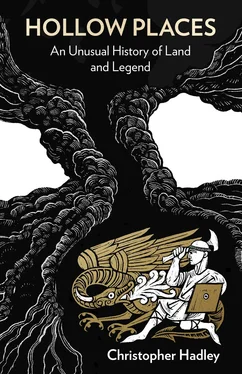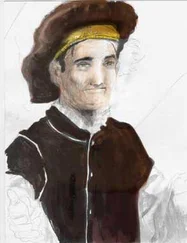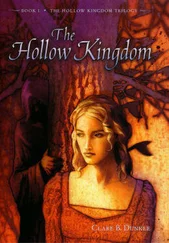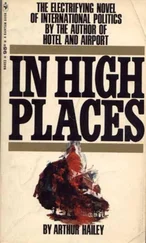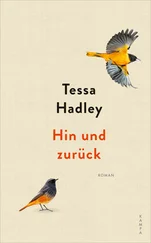While the gentry endowed and managed the schools, their tenant farmers were less than enthusiastic, insisting that workers brought their children to the fields with them. Many, if not most, parents could not afford to forfeit the extra pennies the children would bring home. A survey of over 500 labouring families in East Anglia in the 1830sfound that only about half the income of an average family came from the husband’s day-work. Nearly 80,000 children were permanently employed as agricultural labourers in the middle of the century. At least 5,500 of these were between the ages of five and nine. At harvest time classrooms would be empty.
They could be kept off at short notice for reasons that would baffle us, writes Pamela Horn: ‘Sometimes a strong wind would loose branches and twigs, and children would be kept from school to collect this additional winter firing.’ In the winter months, hard-pressed parents needed their children to earn extra money picking stones, rat-catching or beating for the squire’s shooting parties. These jobs not only kept them from the classroom, they provided them with little alternative stimulation. Common occupations such as bird scaring were an isolating and literally mind-numbing activity. Children would be on their own from dawn to dusk, because it was thought they wouldn’t work as hard if they had someone to talk to; as one chronicler of rural life in Norfolk observed, farmers thought that ‘One boy is a boy, two boys is half a boy, and three boys is no boys at all.’
If children did get past the classroom door, what did the schools teach them? The gentry might have been eager to do their duty and help provide an education to the agricultural workers, but their idea of what constituted that education was not ours. Needlework, cleaning and the catechism were often the extent of it. In the 1840s, girls were taught such rigorous academic subjects as the ‘art of getting up linen’– but only as a reward if they showed good conduct and industry.
At the first school inspectionof Furneux Pelham, in February 1845, seventy-one children turned up for the examination. There were nearly three times as many girls as boys, and just over half were older than ten. Twenty-four were, ‘Able to read a Verse in the Gospels without blundering’, twenty-six girls were ‘Working sums in the Simple Rules’, but only two boys; not one child had advanced to ‘Sums in the Compound Rules’ or the even loftier ‘Working Sums in Proportion and the Higher Rules’.
One school inspector a few years laterlamented that children’s copy books rendered a dull study duller: ‘For of what use can it be to copy ten and twelve times over such crackjaw words as these: “Zumiologist”, “Xenodochium” …? Or such pompous moral phrases as “Study universal rectitude”?’
Pamela Horn gives examples of long-winded sums from the period designed perhaps to keep children occupied: ‘What will the thatching of the following stacks cost at 10 d. per square foot, the first was 36 feet by 27, the second 42 by 34, the third 38 by 24, and the fourth 47 by 39?’ The Hertfordshire diarist John Carringtonset his son similar problems that might have proved useful to old Master Lawrence: ‘I desire to know how much timber there is in 24-foot long and 24-inches girt.’ Beneath the sum Carrington observed that a six-hundred-year-old oak fell down in Oxford in June 1789, ‘the girt of the oak was 21 feet 9 inches, height 71 feet 8 inches. Cubic contents 754 feet … luckily did no damage.’ Perhaps a functional education at least.
This is a picture of sorts, of the men who went to fell that tree, of their education – or lack of – their cares and their material circumstances. It does not get us very much closer to understanding why they thought they had found a dragon’s lair. Perhaps I am going about this back to front because the best way to get at the mental life of a nineteenth-century rural labourer is to take at face value the stories they told. The cultural historian Robert Darntonwrites in his essay ‘Peasants Tell Tales’, that folk tales are one of the few points of entry into the mental world of peasants in the past, and the recurring motifs in early tales can shed light on the preoccupations of the people who told them – such as the tensions caused by the lack of food for all the family members and the preponderance of step-mothers with children of their own, in a world where it was fairly commonplace to lose a partner to illness or childbirth. While I have been asking what the life and education of an Ag Lab can tell us about the story, I might better have asked what the story can tell us about the life of an Ag Lab. They believed that dragons once lived in holes beneath yew trees. That may well be the most interesting thing we will ever know about them.
A postscript: I like to think that whatever happened that morning coloured the life of Thomas Skinner, that his encounter as a child with Piers Shonks and dragon’s holes gifted him a curious mind and a life in search of other hollow places. Writing in 1926, a local historian in Ansteyrecalled in passing an old Gentleman Skinner who had found the entrance to the Blind Fiddler’s tunnel and who ‘took the greatest interest in antiquarian researches’.
To break a branch was deemed a sin ,
A bad-luck job for neighbours,
For fire, sickness, or the like
Would mar their honest labours.
—from a ballad written after the illicit felling of a tree in 1824
Master Lawrence and the others were walking into a story when they stepped out of their doors that still winter morning. Imagine the carpenter’s yardas a tree’s graveyard, boards and off-cuts and shavings of timber memorialising particular oaks or elms taken from woodland and hedgerows. Imagine gates and window frames that Lawrence remembered as branches, and entire cruck-frames that had once grown in Hormead Park Wood. ‘The quality of a tree was remembered to the last fragment after the bulk of the log had been used,’ wrote Walter Rose in The Village Carpenter. ‘In any carpenter’s yard there are piles of oddments – small pieces left over from many trees – but though they are all mixed up, it is usually remembered from which tree each piece was cut.’
Soon there would be loppings of a yew in Lawrence’s yard.
At that hour, women would be fetching water in buckets hanging from yokes, carters were securing the traces to horses while young boys baited them. Old timers might already be warming themselves at the furnace in James Funston’s Smithy. A man could speak freelythere without being held to his word.
The track to the tree led south, following the boundary between Church Hill Field and Broadley Shot. Small children with chilblains hobble along in hard boots – off to pick flints or clean turnips. From the northern edge of Chalky Field it was little more than half a mile south and then west to Patricks Wood, and beyond the hornbeams lay Great and Little Pepsells where the labourers could set down their stoneware jars and their shovels and axes.
The spot was oddly remote. It is the landscape of M. R. James’s ghost story ‘A Neighbour’s Landmark’ that is one minute picturesque, the next, with the changing of the light, bleak, frightening and vulnerable to supernature. Imagine this spot on a grey winter’s morning setting your axe to a village landmark and the only building in view is the tower of the church within whose walls an ancient legend sleeps. Marked by a small triangle where three fields meet, hemmed by three parish boundaries and two dark blocks of woodland, it was the kind of place where gallows once stood, or gibbets swung – places where suicides and strangers were buried. Yews are known to have been used as hanging trees. Such knowledge might well have worked upon the minds of those men that morning. W. B. Gerishis good on this, writing of an older time, of the medieval winter when ‘The spirit world was abroad, riding in every gale, hiding in the early and late darkness of evening among the shadows of the farmhouse, of the rickyard, of the misty meadows, of the dark-some wood. Ghosts – we talk about ghosts, but our ancestors lived with them from All Hallows to Candlemas.’
Читать дальше
